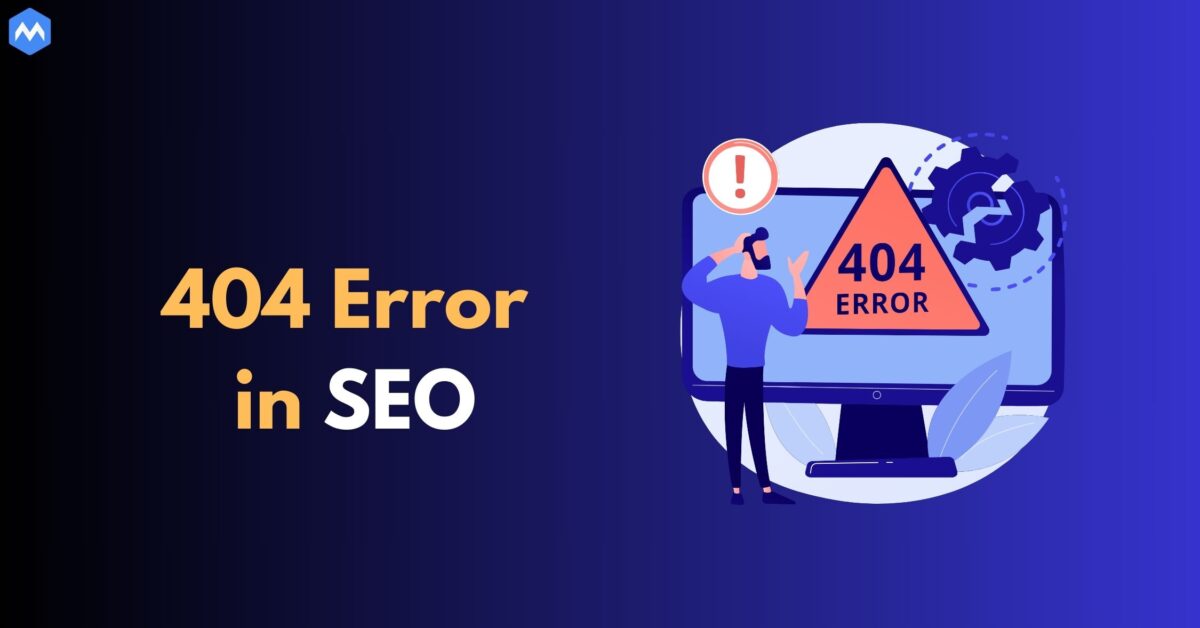404 Error: The Silent Killer of SEO Success
Are you tired of continuously fixing 404 errors on your website all the time? When a 404 error occurs, the common response is to instantly correct it and move. For SEO campaigns, 404 errors can provide a significant challenge to success. When users try to access a page that has been relocated or is no longer available, they encounter these problems.
It can seriously damage your brand and badly impact your SEO since they make it harder for search engines like Google to crawl your page. This suggests that locating and fixing 404 problems ought to be your priority.
In this post, I’ll cover everything you need to know about 404s, including why they are bad for business, how to find them, and how to fix them.
What is 404 error in SEO?
When someone accesses a page that is not hosted on the website, the user receives a 404 error. The HTTP status code “404“A denotes the absence of the requested page, which is returned by the server to the user’s browser. It is the standard HTML code for when there is a problem on a webpage. In technical terms, this means the website holding the server can’t show the page. This may occur for several reasons, including the page being moved, erased, or renamed without the necessary redirects in place.
Website owners should check that redirects are in place for any pages that have been moved or deleted and should routinely check their sites for broken links to prevent them.
Reasons why 404 error occurs?
When a user tries to view a webpage that the server cannot find, they receive 404 errors.
some reasons occur:
- Incorrect URL
- Broken links
- Server or hosting issues
- Restrictive access controls
- Website redesign or migration
- Malware or hacking attempts
- Content management system issues
404 errors can present themselves in many ways, but the overall message is the same. There are many reasons why pages don’t load, or websites are inaccessible, so knowing the potential cause can help you fix it.
Impact of 404 error in SEO
The impact of a 404 error in Search engine Optimization can be significant. If search engines find errors on your website when crawling it, they might consider this to be an indication of neglected website upkeep and devalue your website’s rating.
Page Rank Decrease
A reduction in page rank is one of the major effects of even a little 404 error. A page may be deleted from the index if search engines get frequent requests to visit a no longer available page. This is because such requests send out negative signals about the resource. This especially affects important pages like landing pages and product pages since they won’t be ranked, which may lead to a decline in sales.
Bad User Experiences
404 error in SEO can also lead to a bad user experience. When users are unable to find the content they need, they may grow irate and give up, possibly choosing to use your rivals. Furthermore, because search engines may view a high bounce rate from 404 errors as an indication of a poorly designed website, they can harm your website’s search engine rating.
Using 404 Pages For Good
Using 404 status code pages for good is an effective way to help users find the 404 error page or resource they are looking for instead of closing the window or navigating to other sites.
Website owners can maximise the usefulness of a 404 page by including links that take visitors to other important sections of their website. The homepage, the most well-liked or valuable product or category pages, a few of the most well-liked blog pages, an HTML sitemap, or a method for visitors to report broken links or get in touch with the website owner are a few examples of these links.
This approach shows that the website is well-maintained, user-friendly, and prioritizes the needs of its visitors, which can help improve search engine rankings and overall website performance.
Hard 404 Error vs soft 404 error
There are two different kinds of 404 errors to be aware of. Even though you have most likely seen a hard 404 request while visiting a website, you will rarely encounter a soft 404 error until Google Search Console notifies you of it. When a non-existent page on your website sends a 200 OK status to search engines yet shows a “not found” notice to visitors, this is known as a soft 404.
It notifies Google and other search engines that the URL points to a page. Crawlers waste time trying to index and crawl the URL as a result. The problem is that Google is not very bad at spotting these fake pages. When it finds a page that has all the makings of a page that should return a 404 code but is providing a 200 OK status instead, it raises a soft 404 error and notifies the site owner through the Google Search Console.
How to identify a 404 error on your website
The tools and techniques for finding 404 errors are as follows:
- Website crawler tool:
To find pages on your website with 404 errors, use a website crawling tool like Google Search Console or Screaming Frog.
- Check your server logs:
To find any requests that returned a 404 status code, examine your server logs. This will assist you in determining which pages are 404 error-producing.
- Monitor Google Search Console:
A report on crawl errors, which includes a list of pages receiving a 404 status code, may be obtained from Google Search Console. You can use this report to identify the pages on your website that generate 404 errors.
- Check your website analytics:
Your website analytics can provide information on pages that generate 404 errors. Keep an eye out for pages that have poor engagement or high bounce rates, as they could result in 404 errors.
- Use a broken link checker tool:
Use a broken link checker tool such as Broken Link Checker or Dead Link Checker to identify broken links on your website that generate 404 errors
How to fix 404 error
Fixing 404 error in SEO on your website can be challenging since you may need more control over all links that lead to your site. Here are a few ways you can fix a 404 error on your website:
Moving a page or directory
There’s a potential that pages you add to your website will wind up in the incorrect folder.
It’s easy to repair; all you have to do is match the path to the desired page with what’s in your content management system (CMS) or file transfer protocol (FTP) service.
If you move a folder that contains multiple pages, all the individual pages’ URLs will change. You need to account for these changes and update the URLs as needed.
The simplest solution to resolve 404 errors on your website is to reroute readers to another pertinent page. Just be careful not to just send them back to your site, but rather to something meaningful.
Restore the page
Consider restoring the original page if you discover that there is still a significant amount of demand for a page you removed and there isn’t a good alternative to send consumers to.
Leaving error pages for low-performing content
Leaving an error page can indicate to Google that you have deleted low-performing material and are working to make improvements to your website.
Looking for broken links
Often, a broken or mistyped link can be a caused of 404 error.
Finding and removing a broken link can prevent unnecessary 404s and help clean up your internal linking. Tools like this one from Ahrefs make it easy to account for all your links.
404s are part of owning a website. Providing the greatest experience for both consumers and search engines will benefit you in the long term, regardless of how you choose to handle them.
Correct the link
You may easily change a broken link on your website to connect to the right URL. Prioritise fixing any key pages that have 404 errors. Fixing 404 status code on product, contact, and service pages should come first.
Other pages may not be so pressing. Google Search Console may uncover 404 errors on pages that a human user would never be able to navigate to. You’ll want 404 error fix them eventually, but these errors shouldn’t impact your rankings too much.
Why Are 404 Errors Bad for SEO Websites?
A significant quantity of It could be problematic for your website. First, let us consider the user’s perspective. A bad user experience will arise from visitors to your site consistently seeing 404 errors. It can be sufficient to drive away a visitor. Repeat after me: a single error might cost you a client. It gets worse because you can lose rankings due to 404 errors as well. Google won’t penalise you directly for having a lot of 404 errors because they aren’t ranking criteria in and of themselves.
But they can harm your SEO.
It will be more difficult for Google and other search engines to index your website if it contains a lot of broken links. Furthermore, your website won’t spread link equity in an efficient manner.
Users that arrive at your site via a 404 page may also experience high bounce rates. Bounce rates are a ranking element, as opposed to 404 errors, and if your site has an excessively high bounce rate, Google may penalise it.
Conclusion
In summary, 404 errors can seriously undermine your website’s search engine optimization efforts by resulting in lost traffic, a worse user experience, and lost opportunities for backlinks. Nevertheless, by proactively detecting and resolving these errors, you can raise your website’s search engine rankings, draw in more visitors, and strengthen your online presence. By regularly monitoring your website for 404 error in SEO and implementing effective solutions, you can avoid these common errors and achieve your SEO goals. Seek expert guidance from best digital marketing agency Of Metaloop Marketing for effective SEO strategies and improved search performance.



Write a Comment